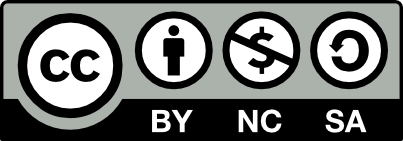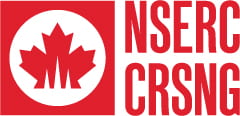



Welcome to Writing in the Sciences (WITS)
Welcome! As professional writing consultants, we understand that writing can be challenging and time-consuming, and that many science writers often avoid the writing process until the end stages of their research study. We want to support your progress to help you start early and write sections regularly throughout your research process.
This Writing in the Sciences (WITS) website is designed to help writers address some of the challenges that they face with scientific writing. Some of these challenges include:
- feeling overwhelmed and uncertain of where to start
- struggling to articulate ideas and concepts in a clear and concise way
- navigating the transition from writing course assignments like lab reports to writing publishable research articles
- being uncertain of what information to include in the different sections of a scientific research article
This website features two modules. In these modules, we introduce you to strategies and techniques that will help you approach your scientific writing with confidence.
The first module Writing Research Articles, developed by writing specialists Jodie Salter and Sarah Gibbons, provides a detailed approach for writing a scientific research article. It offers strategies for outlining key components and for mapping individual sections. This module consists of seven sections that walk you through the writing process from beginning to end. In our “Getting Started” section, we teach how to analyze research articles in your field, and we provide a research article mapping template to help you create a strong outline. In our sections on writing the Introduction, Methods, Results, and Discussion sections, we outline the key components that you need to address in research articles, and we share techniques for how to communicate your research effectively. In our final sections, we teach how to write concise abstracts and titles, and we provide strategies for revising and responding to feedback.
The second module Storytelling in Science Writing, developed by ecologist Christopher Greyson-Gaito, focuses on using storytelling techniques from Hollywood to write an engaging scientific research article. This module teaches writers how to create a storyboard to map out a research article from beginning to end and how to use the ‘and, but, therefore’ technique to write an effective abstract.
How to Use the Site (For Students and Faculty)
These modules will help writers get started with their writing, create strong outlines, identify the key information that they need to include in scientific writing genres, and make the transition from writing for assignments to publications.
The modules can be completed in any order. We recommend that writers choose a module, start with the first section, and complete the associated worksheets and reflection activities along the way. These worksheets and activities provide writers with opportunities to develop new skills, practice techniques, and apply strategies discussed in the modules to their own scientific writing.
The Writing in the Sciences (WITS) Youtube channel hosts all the video content for this website.
About this Site
This project was made possible by a Natural Sciences and Engineering Research Council of Canada (NSERC) Science Communication Skills Training Grant in 2020.
Project Team
Dr. Sarah Gibbons and Dr. Jodie Salter, Writing Specialists at the University of Guelph, are two of the co-PIs on the NSERC development grant and are the lead content creators and web developers for this WITS online project.
Acknowledgments
This project was funded with the generous support of the NSERC Science Communication Skills Grant program, the University of Guelph’s Research Innovation Office, and the Campbell Centre for the Study of Animal Welfare. We would like to thank all the following contributors for their time and support:
- Dr. Georgia Mason, Director of the Campbell Centre for the Study of Animal Welfare and Professor, Department of Integrative Biology at University of Guelph, as our co-PI on the grant
- Lenore Latta who in her former role as Writing Specialist developed the in-person workshop series at the University of Guelph in 2013 to support graduate student writers in the sciences
- Dr. Christopher Greyson-Gaito, former University of Guelph PhD candidate and ecologist, for his creation of the module Storytelling in Science Writing
- Marinette Fargo, formerly from the University of Guelph’s Digital Accessibility Resource Centre, who provided accessibility support for our webpages and downloadable resources
- Tiffany Murphy from the University of Guelph McLaughlin Library’s Communications team who developed the Writing in the Sciences graphics
- University of Guelph undergraduate students: Kaleigh Kerr, for website development; and Lujayn Mahmoud and Amrit Rooprai, for reviewing and providing feedback on the content
Accessibility
Accessibility is a dynamic process, and we are continually working to improve our services. If you find any part of this site inaccessible to you, or if you have any suggestions for how we might make it more accessible in content, language, tone, style, etc., we would love your feedback.
Disclaimers
For educational purposes, we’ve created fictional excerpts that resemble passages from scientific research articles. The fictional examples are intended to illustrate writing techniques and are not designed to teach scientific content. Please note that the scientific content and data in these passages and videos is fictional.
This site features reflection activities that collect information in fillable forms. These activities provide writers with opportunities to reflect on their process, practice their skills, and apply specific techniques to their own writing. Please note that all information collected in fillable forms is recorded anonymously and will be used only for program evaluation, improvements, and reporting.
Copyright
Unless otherwise noted, all images that appear on this site are copyright-free and are free to distribute without attribution under the Pixabay license.

The main content of this site is licensed under a Creative Commons Attribution – NonCommercial – Sharealike license, apart from specific sections that will have a separate license indicated. A Creative Commons Attribution- NonCommercial-Sharealike license means that others may build on or alter content when it is re-shared. The content must be only used for non-commercial purposes and the original work must be attributed to the content creators. Users must also license the new work under the same license. For more information about Creative Commons licensing.
This project was made possible by an NSERC Science Communication Skills Training Grant.




